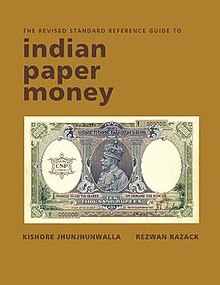
The Brunei dollar, has been the currency of the Sultanate of Brunei since 1967. It is normally abbreviated with the dollar sign $, or alternatively B$ to distinguish it from other dollar-denominated currencies. It is divided into 100 sen (Malay) or cents (English). The Brunei dollar is issued by the Autoriti Monetari Brunei Darussalam.
The Nepalese rupee is the official currency of the Federal Democratic Republic of Nepal. The Nepalese rupee is subdivided into 100 paisa. The issuance of the currency is controlled by the Nepal Rastra Bank, the central bank of Nepal. The Nepalese rupee was introduced in 1932 when it replaced the Nepalese mohar at the rate 2:1.

The córdoba is the currency of Nicaragua. It is divided into 100 centavos.
The Bangladeshi taka is the currency of the People's Republic of Bangladesh. In Unicode, it is encoded at U+09F3৳ (HTML ৳).

The Indian rupee is the official currency of India. The rupee is subdivided into 100 paise, though as of 2019, coins of denomination of 1 rupee is the lowest value in use. The issuance of the currency is controlled by the Reserve Bank of India. The Reserve Bank manages currency in India and derives its role in currency management on the basis of the Reserve Bank of India Act, 1934.
The kwanza is the currency of Angola. Four different currencies using the name kwanza have circulated since 1977.

The kyat is the currency of Myanmar (Burma). It is often abbreviated as "K" or "Ks" (plural), which is placed before or after the numerical value, depending on author preference.

National Bank Notes were United States currency banknotes issued by National banks chartered by the United States Government. The notes were usually backed by United States bonds the bank deposited with the United States Treasury. In addition, banks were required to maintain a redemption fund amounting to five percent of any outstanding note balance, in gold or "lawful money".

The Moroccan dirham is the official monetary currency of Morocco. It is issued by the Bank Al-Maghrib, the central bank of Morocco. One Moroccan dirham is subdivided into 100 centimes (cents).

The history of the Rupee traces back to ancient Indian subcontinent. The mention of rūpya by Panini is seemingly the earliest reference in a text about coins. The term in Indian subcontinent was used for referring to a coin.
The rupee was the currency of Burma between 1852 and 1952, except for the years 1943–1945.

The Hyderabadi Rupee was the currency of the Hyderabad State from 1918 to 1959. It coexisted with the Indian rupee from 1950. Like the Indian rupee, it was divided into 16 annas, each of 12 pai. Coins were issued in copper for denominations of 1 and 2 pai and ½ anna, in cupro-nickel for 1 anna and in silver for 2, 4 and 8 annas and 1 rupee.
The pound was the currency of Western Samoa between 1914 and 1967. It was subdivided into 20 shillings, each of 12 pence.
Between 1945 and 2007 Nepalese banknotes were issued with the portraits of four different kings. Starting in October 2007 the king’s portrait was replaced by Mount Everest on all notes which have been issued since.

The Indian 1000-rupee banknote was a denomination of the Indian rupee. It was first introduced by the Reserve Bank of India in 1938 under British rule and subsequently demonetized in 1946. Post-independence, the denomination was re-introduced in 1954. In January 1978, all high-denomination banknotes of ₹1000, ₹5,000, and ₹10,000 were demonetized in order to curb unaccounted cash money.

The Indian 100-rupee banknote is a denomination of the Indian rupee. It has been in continuous production since Reserve Bank of India took over the functions of the controller of currency in India in 1935. The present ₹100 banknote in circulation is a part of the Mahatma Gandhi Series. These notes are in circulation along with the Mahatma Gandhi New Series of banknotes which were introduced in July 2018.

The Indian 20-rupee banknote is a common denomination of the Indian rupee. The current ₹20 banknote in circulation is a part of the Mahatma Gandhi Series. The Reserve Bank introduced the ₹20 note in the Mahatma Gandhi Series in August 2001. Making it one of the last denominations of the series to be introduced in the series; other than the ₹5, which was introduced in November 2001.

The Indian 10-rupee banknote is a common denomination of the Indian rupee. The ₹10 note was one of the first notes introduced by the Reserve Bank of India as a part of the Mahatma Gandhi Series in 1996. These notes are presently in circulation along with the Mahatma Gandhi New Series which were introduced in January 2018, this is used alongside the 10 rupee coin.

Banknotes of the Australian pound were first issued by numerous private banks in Australia, starting with the Bank of New South Wales in 1817. Acceptance of private bank notes was not made compulsory by legal tender laws but they were widely used and accepted. The Queensland government issued treasury notes (1866–1869) and banknotes (1893–1910), which were legal tender in Queensland. The New South Wales government issued a limited series of Treasury Notes in 1893.
Rezwan Razack is an Indian businessman and numismatist.













